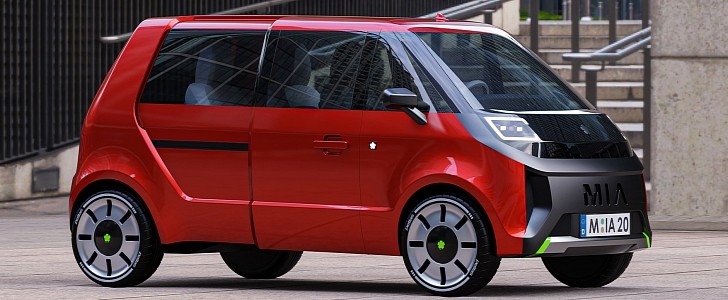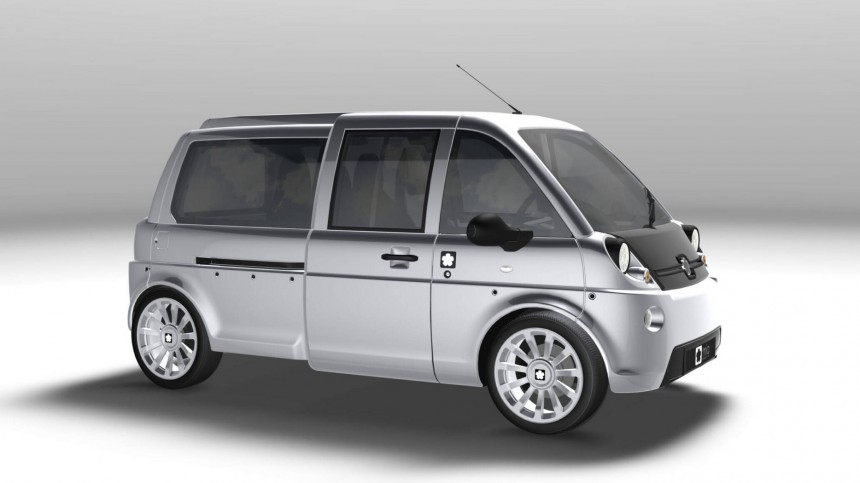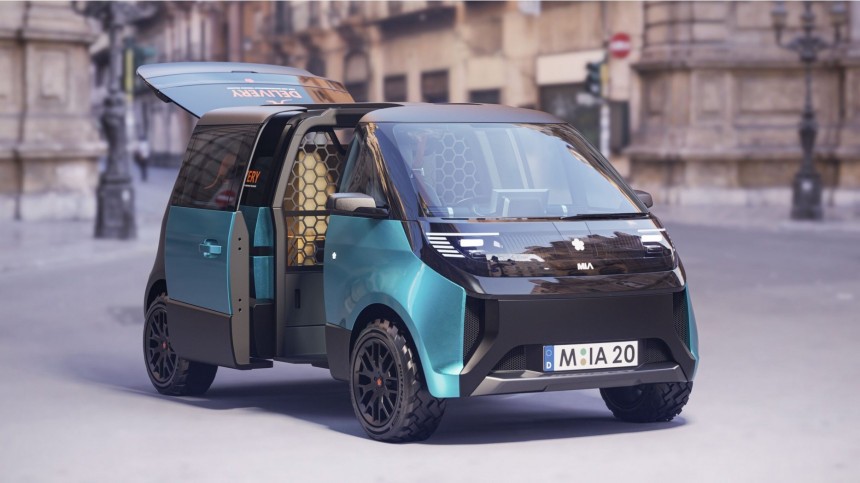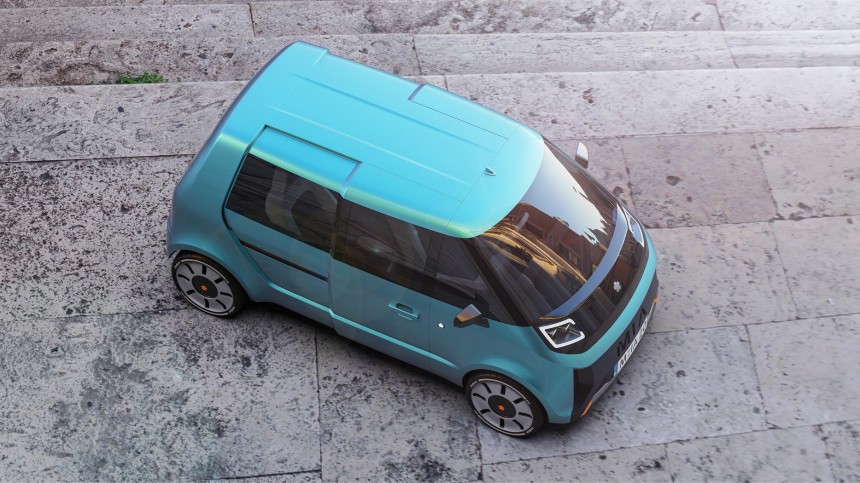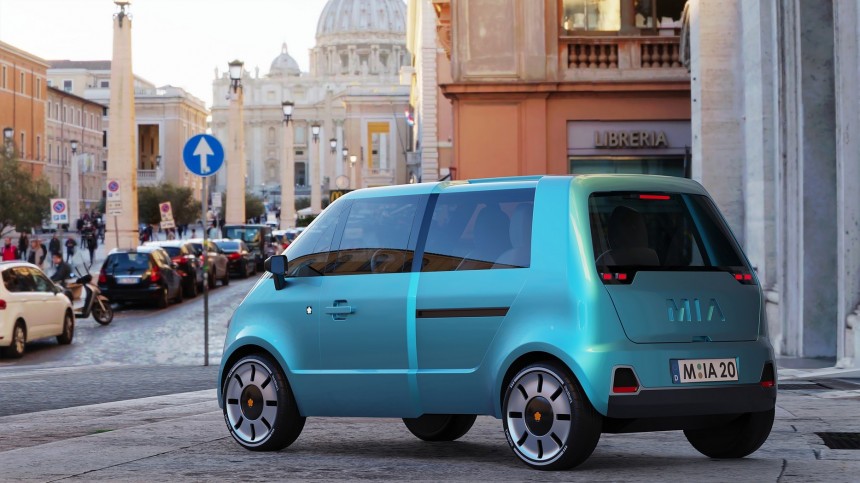It is hard to tell the wheat from the chaff these days. With electric mobility pressing even well-established companies to change, many newcomers think this is their chance to be among the big ones or at least to receive investments from people that think they can. If Tesla did it, why wouldn’t others, right? Fox e-Mobility arrives with good signs and perhaps a solid plan: bringing the MIA Electric from the dead.
Aptera will probably be the first company to pull that off after Chris Anthony and Steve Fambro bought it back. It is not clear if Fox e-Mobility has former partners from MIA Electric or if they are just a team that thought the first MIA a fantastic idea and bought it. If you are not familiar with this tiny EV, let us tell you what the MIA was.
Conceived by Turkish designer Murat Günak – a former head designer at Volkswagen and Mercedes-Benz – the MIA was a minuscule electric car presented in June 2011. It was obviously on purpose: Günak thought urban vehicles should have a small footprint. Having a central driving position made it easy to export and also gave it a slight McLaren F1 feeling.
MIA’s three-seater version was 2.87 meters (113 inches) long, and it also had the L (four-seater) or Van derivatives, which were 3.19 m (125.5 in) long. The wheelbase was the same for all of them: 1.81 m (71.1 in), as were the width (1.64 m, or 64.6 in) and the height (1.55 m, or 61 in). With sliding doors (only two on the sides), it looked like the offspring of a first-generation Renault Twingo and a Peugeot 1007 – don’t ask us which one was the father.
The tiny EV could have two LFP (lithium iron phosphate) battery pack options: 8 kWh or 12 kWh. With the largest one, the MIA could travel up to 130 kilometers (81 mi) at a top speed of 100 kph (62 mph). Being so small, it was also very light, which is essential for more range. The vehicles were produced in Cerizay, France. Sadly, MIA Electric was a spin-off of Heuliez, a company that was already enduring difficult times. When Heuliez closed its doors in 2012, MIA Electric followed suit.
The new MIA is called MIA 2.0. It looks like the same vehicle with just some improvements. Fox e-Mobility confirmed it would be 3.20 m long and weigh less than 1,000 kg (2,204 lbs). It makes perfect sense: the company states that the MIA 1.0 could be driven on highways with the M1 homologation. If it can spare homologation costs with the MIA 2.0, it will save a lot of money.
According to Fox e-Mobility's website, the new car will have a 225-km (140-mi) range that can be extended thanks to an optional secondary battery pack. With it, the MIA 2.0 would be able to travel 450 km (280 mi). A recent document released by the company states the range is 200 km or 400 km. We’re not sure which ones are correct, but there's a great chance that none of the above is. After all, there’s no prototype yet, which is the first warning sign about the project.
There’s no information about the chemistry of this battery pack, but it is very likely still LFP due to the costs. All we know is that InoBat Auto will be the supplier of “complete battery systems.” Considering the range, it is fair to say the second battery pack will have the same size as the main one. Unfortunately, the website also does not inform how big Fox e-Mobility plans them to be.
With only CGI images to present, the MIA 2.0 could be compared to anything presented so far by Alpha Motors, which is not very reassuring. The main difference between these companies is that we know who is behind Fox e-Mobility.
Philippe Perret is its CEO, and the project is under the responsibility of Christian Jung, an automotive engineer who worked at BMW, Porsche, and was the CTO (chief technical officer) at Automobili Pininfarina before joining Fox e-Mobility with the same job.
The company will not build a factory: it will have a manufacturing contract for the new MIA. However, it did not disclose if it already has a partner for that. It only said that it would be “a leading vehicle manufacturer.” The MIA will have its own skateboard, which means it will only hire someone to build the vehicles. The project will belong entirely to Fox e-Mobility, which will allow it to license it to other companies.
Selling the cars and licensing them to companies outside Europe are two of the revenue streams the company believes it can have. The last one is to sell carbon credits to companies in need of that help.
On its website, Fox e-Mobility invites people to become investors. The company is already listed on the Düsseldorf, Hamburg, and Berlin stock exchanges. In a recent document, the company states that Günak is involved in the project and that the interior and exterior designs have been recently approved.
Production should start in 2024, and the first prototypes should be produced in 2022. Fox e-Mobility promises that it will cost less than €20,000 ($22,879 at the current exchange rate), something that the Dacia Spring already delivers. Perhaps the new MIA 2.0 offers something else to become a compelling choice. We have tried to contact the company to learn more about it and will tell you everything we hear back from it.
Conceived by Turkish designer Murat Günak – a former head designer at Volkswagen and Mercedes-Benz – the MIA was a minuscule electric car presented in June 2011. It was obviously on purpose: Günak thought urban vehicles should have a small footprint. Having a central driving position made it easy to export and also gave it a slight McLaren F1 feeling.
MIA’s three-seater version was 2.87 meters (113 inches) long, and it also had the L (four-seater) or Van derivatives, which were 3.19 m (125.5 in) long. The wheelbase was the same for all of them: 1.81 m (71.1 in), as were the width (1.64 m, or 64.6 in) and the height (1.55 m, or 61 in). With sliding doors (only two on the sides), it looked like the offspring of a first-generation Renault Twingo and a Peugeot 1007 – don’t ask us which one was the father.
The new MIA is called MIA 2.0. It looks like the same vehicle with just some improvements. Fox e-Mobility confirmed it would be 3.20 m long and weigh less than 1,000 kg (2,204 lbs). It makes perfect sense: the company states that the MIA 1.0 could be driven on highways with the M1 homologation. If it can spare homologation costs with the MIA 2.0, it will save a lot of money.
According to Fox e-Mobility's website, the new car will have a 225-km (140-mi) range that can be extended thanks to an optional secondary battery pack. With it, the MIA 2.0 would be able to travel 450 km (280 mi). A recent document released by the company states the range is 200 km or 400 km. We’re not sure which ones are correct, but there's a great chance that none of the above is. After all, there’s no prototype yet, which is the first warning sign about the project.
With only CGI images to present, the MIA 2.0 could be compared to anything presented so far by Alpha Motors, which is not very reassuring. The main difference between these companies is that we know who is behind Fox e-Mobility.
Philippe Perret is its CEO, and the project is under the responsibility of Christian Jung, an automotive engineer who worked at BMW, Porsche, and was the CTO (chief technical officer) at Automobili Pininfarina before joining Fox e-Mobility with the same job.
Selling the cars and licensing them to companies outside Europe are two of the revenue streams the company believes it can have. The last one is to sell carbon credits to companies in need of that help.
Production should start in 2024, and the first prototypes should be produced in 2022. Fox e-Mobility promises that it will cost less than €20,000 ($22,879 at the current exchange rate), something that the Dacia Spring already delivers. Perhaps the new MIA 2.0 offers something else to become a compelling choice. We have tried to contact the company to learn more about it and will tell you everything we hear back from it.
